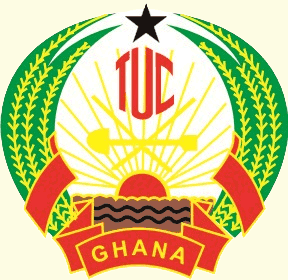
By Ernestina MENSAH
The Bank of Ghana (BoG) is introducing the Ghana Gold Coin, an innovative initiative aimed at providing Ghanaians with a secure investment option backed by locally mined Gold. The move comes at a critical time when many citizens are converting their cedis into U.S. dollars to preserve the value of their savings due to concerns about currency depreciation. By offering the Ghana Gold Coin, BoG hopes to provide an attractive alternative that not only safeguards wealth but also reduces the demand for foreign currencies like the U.S. dollar.
The Ghana Gold Coin will be available in 1 ounce, half ounce, and quarter ounce denominations and would be purchased using Ghana Cedis. The daily price of the coins will be published on BoG’s website, reflecting global Gold prices in real time. This product also supports BoG’s broader goal of mopping up excess liquidity in the economy to curb inflation.
The Ghana Gold Coin serves as a stable investment vehicle in contrast to the U.S. dollar, which can be more volatile due to political and economic factors. Gold, on the other hand, has shown steady growth over the past decade and is considered a reliable store of value. It however has its risks which will be delved deeper as we move along.
Why the Ghana Gold Coin is Attractive
One of the reasons the Ghana Gold Coin is attractive is its relatively stable volatility. Over the past 10 years, the price of Gold has generally increased, making it a secure investment. In 2013, the price of Gold was around $1,200 per ounce, and by 2023, it had risen to $1,900 per ounce, peaking at $2,070 per ounce during periods of global instability in 2020. This long-term upward trend highlights Gold’s resilience, making the Ghana Gold Coin an appealing alternative for Ghanaians looking to preserve their wealth.
The Ghana Gold Coin also provides the economy with an alternative investment as a tool for diversification due to its general inverse relationship with the value of the US dollar on the international market. This impact is felt most during recession when the value of dollar reduces, and Gold becomes a safe haven.
In essence, the Ghana Gold Coin gives investors a way to balance their portfolios, allowing them to mitigate risks associated with currency volatility, especially the depreciation of the Cedi or the US dollar. This move will also help insulate the national economy from global shocks, particularly those related to fluctuations in the international value of major currencies.
Global Examples: How Other Countries Have Used Gold-Backed Investments
Below are some examples of countries that successfully implemented Gold-backed investment initiatives similar to the Ghana Gold Coin, achieving objectives such as increased Gold reserves, reduced reliance on foreign currencies, and financial inclusion.
Turkey’s Gold Savings Program encouraged citizens to deposit personal Gold into the banking system, converting private Gold into formal financial reserves. By 2020, more than 60 tons of Gold had been deposited, helping Turkey increase its Gold reserves to 515 tons by 2021, up from 116 tons in 2017—a 344% increase. This move reduced reliance on U.S. dollars and helped stabilize the Turkish lira.
India’s Gold Sovereign Bond Scheme allowed citizens to invest in government-backed Gold bonds instead of physical Gold. The program reduced India’s demand for imported Gold, cutting Gold imports by 15-20% annually, which improved the country’s current account balance. Investors also received 2.5% annual interest on top of the value of the Gold, making it an attractive option and helping stabilize the rupee.
China’s Gold Accumulation Plan (GAP) allowed citizens to gradually invest in Gold through their bank accounts, making Gold investment accessible to lower-income individuals. By 2020, the program had attracted millions of participants, expanding financial inclusion and boosting the country’s Gold reserves.
Russia introduced Gold-backed savings accounts, allowing citizens to hold savings in Gold without needing to physically holding it. By 2021, Russia’s Gold reserves had grown to 2,300 tons, making it the fifth-largest holder of Gold globally. This move reduced dependence on foreign currencies and helped stabilize the Russian economy amid international sanctions.
Risks to Consider
While the Ghana Gold Coin presents a promising opportunity for economic stability, several risks or challenges must be addressed to ensure its success:
Public Trust: Convincing the public to shift from cash or U.S. dollars to Gold investments will require a robust public education campaign. People need to be assured that their Gold investments are secure and can be easily accessed or converted into cash.
Liquidity: Ensuring liquidity is crucial. Citizens need to know that they can easily convert their Gold coins into cash when needed. If liquidity issues arise, the confidence in the product will weaken, reducing participation.
Gold Price Volatility: Although Gold is traditionally a stable asset, its price can fluctuate in the short term. A significant drop in global Gold prices could diminish the value of the Ghana Gold Coin, leading to potential losses for investors who have a short-term investment profile and eroding trust in the product.
Accessibility: For the initiative to succeed, the Ghana Gold Coin must be accessible to a wide range of income levels. If it is perceived as a product only for the wealthy, it may not have the broad economic impact necessary for long-term stability.
Source: Bank of Ghana’s Summary of Economic Data Report
Conclusion
The Ghana Gold Coin initiative is a bold and innovative strategy by the Bank of Ghana to provide a secure investment option, reduce demand for foreign currencies, and stabilize the economy. Drawing on successful examples from countries like Turkey, India, China, and Russia, this initiative has the potential to help manage liquidity, improve financial inclusion, and provide stable returns for Ghanaians. However, careful attention must be paid to addressing the risks of public trust, accessibility, price fluctuations, and liquidity.
Recommendations
To maximize the success of the Ghana Gold Coin initiative, the following recommendations should be considered:
Public Education Campaign: The BoG should launch an extensive campaign to explain the benefits of investing in Gold and how the Ghana Gold Coin can protect wealth in times of economic uncertainty.
Price Stability Mechanisms: To build confidence, the BoG could offer minimum price guarantees to protect investors from short-term Gold price drops.
Make it Accessible: Introducing smaller denominations or a Gold accumulation plan, similar to China’s, would ensure the product is accessible to all income levels, enabling broader participation.
Ensure Liquidity: The BoG should establish mechanisms to ensure that citizens can easily convert their Gold coins back into cash when needed, fostering trust in the product. BoG can collaborate with commercial banks, microfinance institutions, and other financial service providers to act as intermediaries in facilitating the liquidity of old coins.
BoG can also promote the creation of a secondary market for the Gold coins where private buyers, financial institutions, and individual holders can trade the coins. This would increase liquidity as individuals would not be dependent solely on the central bank to exchange their coins but could also engage with the broader market to sell them.
By addressing these recommendations and learning from global examples, the Ghana Gold Coin can play a vital role in enhancing financial stability and providing Ghanaians with a reliable investment alternative.
The writer is the Head, Market Risk,Bank of Africa Ghana Ltd
The post BoG’s Gold Coin initiative: a strategic move with risks to consider appeared first on The Business & Financial Times.
Read Full Story










Facebook
Twitter
Pinterest
Instagram
Google+
YouTube
LinkedIn
RSS